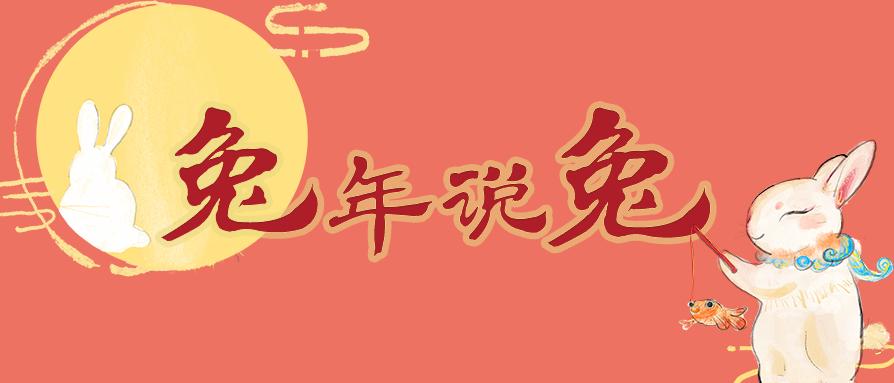
Wuhan, 27 Jan (Xinhua) -- Question: Double Rabbit Looking at the Moon: The story of the rabbit and the moon that has lasted for a thousand years
Xinhua News Agency reporter Yu Pei
Folklore has it that there is a jade rabbit in the moon, so the moon is called "jade rabbit". The jade rabbit rises east, the golden wushi falls, and in the flow of time, the rabbit and the moon stage a story that lasts for thousands of years.
The two rabbits lie under the loquat tree, looking up at the moon, the bright moon is dotted with clouds, and the loquat tree is full of fruit... The blue and white jade Dongsheng picture ring ornament in the collection of Hubei Provincial Museum carves the mirror relationship between the double rabbit looking at the moon on a pair of jade ornaments, the two ornaments and sizes are basically the same, and the quiet and peaceful scene sets off the well-behaved and cute jade rabbit, vivid and interesting, reflecting the "popular elements" of the Ming Dynasty.
Hubei Provincial Museum Tibetan blue white jade Dongsheng picture ring. Photo courtesy of Hubei Provincial Museum
The blue and white jade Dongsheng Ring was unearthed in the tomb of King Zhuang of Zhongxiang Liang, Hubei Province. The tomb of King Liangzhuang is the joint burial tomb of Zhu Zhanyan, the ninth son of Emperor Mingrenzong in the early Ming Dynasty, and his step-concubine Wei, and the large number, variety and craftsmanship of all kinds of jade and gemstone objects unearthed are unprecedented among the prince's tombs that have been discovered.
Finely detailed, this pair of jade ornaments are bluish white, grease luster, round, and slightly convex on the front. The outer edge is carved into a ring, and the inner ring is carved with a double rabbit moon pattern. Double rabbit, large and small, long ears, round eyes, fat mouth, lying under the leafy loquat tree, the crescent moon rises on the treetops, auspicious clouds set off, in the three angles of color, shape, ornamentation fully interpret the "beauty of jade".
Rabbits were auspicious in ancient times and a common shape in jade. During the Ming and Qing dynasties, the city's economy was highly prosperous, and the demand for jade from the imperial court and all social strata increased. With the development of commercial production, government-made, private jade workshops and jade commodity trading have developed rapidly. Since the middle and late Ming Dynasty, jade types, ornamental themes, jade craftsmanship and other aspects have presented a clear style of the times, and characters, landscapes, legends and stories, and a large number of modeling patterns with the meaning of objects have emerged, and the art of craftsmanship has become more and more exquisite.
In the comprehensive "new" Liangzhuang Wang Zhen exhibition of the Hubei Provincial Museum, a dazzling array of gold and jade objects exudes brilliance, witnessing the cultural exchanges of the Maritime Silk Road. The green and white jade Dongsheng picture ring decoration is displayed side by side with the green and white jade autumn mountain ornament, white jade round carved folding branch peony peony ornament, etc. The delicate and delicate pieces of ancient jade carved in multiple layers highlight the extraordinary carving skills and rich and diverse subject types of jade in the Ming Dynasty.
"The picture must be intentional, and the intention must be auspicious." Chen Chun, a research librarian of the Hubei Provincial Museum, said that jade decoration in the Ming Dynasty has a wide range of themes, a strong atmosphere of life, and auspicious motifs. For example, the jade ornaments with rich patterns such as dragons wearing peonies, canglong godsons, all the way to Lianke, Nian Nian Youyu, melon and mianmian, and Fulu Shou are a reflection of the folk and secular nature of jade at that time.
Design: Lu Junyu
Weifang Radio and Television Station Editor: Qi Feng Review: Jia Chunyi Li Xu Source: Xinhuanet